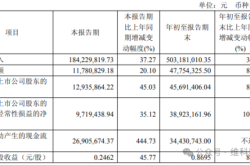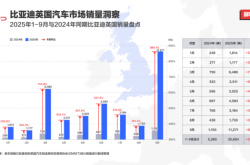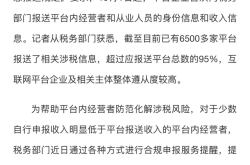2025 Domestic HR SaaS Power Rankings: AI Agent + Globalization Wave Ignites New Industry Changes
![]() 03/18 2025
03/18 2025
![]() 553
553
In 2025, the field of human resources is undergoing a silent yet profound revolution.
As AI Agents move from laboratories to core business scenarios, the HR SaaS (Human Resource Software as a Service) sector has quietly entered the deep waters of intelligent competition. This ranking competition is not only a contest of technical strength but also an ultimate test of industry insight, ecological integration capabilities, and business imagination.
From the automation of salary calculations to the AI-ization of organizational strategies, from standardized services for thousands of people to personalized services for billions, how do HR SaaS vendors reconstruct value in the wave of AI Agents? How can enterprises leverage technology to achieve exponential leaps in organizational capabilities?
This article will pierce through the industry noise to reveal the underlying logic and competition rules behind intelligent transformation. At the same time, combining the selection of enterprise HR SaaS management software, this article selects and briefly analyzes the top 5 domestic HR SaaS software vendors.
I. HR SaaS Evolution: Four Jumps from Efficiency Enhancement to Decision Making
Before discussing the current landscape of HR SaaS, it is necessary to sort out its development history:
● Mechanical Replication Era (2000-2010): ERP extension modules represented by Kingdee and UFIDA achieved the electronic migration of paper records. The core value lies in freeing HR practitioners from Excel spreadsheets, but data silos were severe. A multinational manufacturing company once experienced a delay in salary payments for 10,000 employees due to data conflicts between the payroll system and the attendance system.
● Cloud Reconstruction Cycle (2011-2018): Salesforce's success gave birth to an independent HR SaaS track. Beisen and E-Road launched integrated cloud platforms that connect multiple human resource module data. Taking E-Road as an example, its one-stop human resource management platform with salary as the core has become a long-term partner for the digital management of human resources in many large and medium-sized enterprises at home and abroad.
● Data Intelligence Awakening (2019-2024): Breakthroughs in GPT-3 and Transformer architectures brought about qualitative changes. Moka's AI interviewer can evaluate candidates' communication skills through semantic analysis, but at this time, AI is still a "passive responder" lacking strategic decision-making capabilities.
● Cognitive Revolution Era (2025-): AI Agents break through their tool attributes and possess organizational diagnosis and strategy generation capabilities. An HR system of a new energy enterprise autonomously generated a business unit reorganization plan by analyzing 245 organizational health indicators, boosting human efficiency by 32%. Human resource management officially enters the era of "digital twins".
Looking back at the "past path" of HR SaaS, among the numerous evolutionary upgrades, integration and one-stop services, and now, AI Agents, as a new product form of AI, have brought reorganization, reconstruction, and reshaping to human resource practitioners and human resource management models with each iteration. In particular, the "sudden rise" of AI Agents has brought a comprehensive impact from execution to decision-making to the human resource sector and even all walks of life.
II. AI Agent + HR SaaS: Disruption and Reconstruction
Data shows that by the end of 2024, the global market size of Agents will exceed US$10 billion. According to research and forecasts by Markets and Markets, a market research and strategic consulting firm, the global market size of Agents will soar to US$47.1 billion by 2030, with a compound annual growth rate of 44.8%. The domestic Agent market is growing faster, having exceeded RMB 100 billion in 2024 and is expected to reach RMB 852 billion in 2028, with an average annual compound growth rate exceeding 70%.
The reason for such significant growth and disruption, we believe, mainly stems from four aspects:
● Efficiency Revolution: Taking the resume screening scenario as an example, AI Agents reduce the time spent on resume screening from 4 hours per person to 3 minutes, which is obviously more competitive compared to relying on human judgment and screening. Beyond that, its deeper value is also reflected in the comprehensive dimensional analysis of talent profiling.
● Experience Reshaping: AI Agents improve efficiency or quality in human resource business scenarios, benefiting HR, employees, and even managers to some extent. From the employee's perspective, the improvement in human resource business efficiency first benefits employees, as they can quickly receive responses and solutions to their inquiries or information needs. During the process of understanding the company, scheduling interviews, and inquiring about job information, HR uses AI Agents to bridge the "one step forward" and "one step backward"; from the manager's perspective, the integration of intelligent agents is a sign of the development of informatization and dataization towards a higher level, implying a more holistic and refined management perspective and data-driven decision-making.
● Strategic Empowerment: The AI-driven organizational health dashboard can monitor 243 organizational effectiveness indicators in real-time. A technology company used this to predict a talent gap crisis in a key department six months in advance. According to the "White Paper 2.0 on the Application of AI in Enterprise Human Resources" recently released by E-Road, the application of AI in human resources will develop from "efficiency enhancement" to "improving decision-making accuracy", indicating that in the future, AI Agent + HR SaaS will change the value of AI in enterprise business decision-making, strategy formulation, and other aspects.
● Organization Decoupling and Reweaving: The reconstruction of the HR Three-Pillar Model (COE/SSC/HRBP) under AI capabilities is a typical representative: SSC (Shared Service Center) within the enterprise transfers 80% (or even more) of transactional work to AI Agents, thereby releasing more staff energy to focus on parts of higher core value; another example is the transformation of HRBP into "Organizational Development Architects", focusing on designing virtual team collaboration mechanisms and agile culture implementation, etc. All these changes are innovative applications resulting from the collision between AI Agents and HR SaaS.
If a more vivid metaphor is used to illustrate this, it would be: SaaS is like building blocks, and Agents are like neural networks. Previously, it relied on preset rules and system workflows; nowadays, it pursues dynamic generation, intention understanding, autonomous decision-making, etc., on top of automation.
So, how should enterprises select the appropriate human resource business system to efficiently and correctly operate their complex and sophisticated human resource business systems and even overall business operations? The following is a brief analysis of the top 5 domestic HR SaaS software vendors based on three dimensions: software capabilities, customer types, and innovation capabilities.
III. Vendor Arena: Multidimensional Capability Matrix Dissection
3.1 Software Capabilities:
● E-Road: E-Road focuses on providing one-stop human resource services centered on salaries for large and medium-sized enterprises. Its core product, People+, is an HR SaaS centered on complex salary calculations, and its system service capabilities cover the entire lifecycle of talent management, including recruitment, core personnel, attendance, performance, talent development, training, etc.
Currently, based on its global multi-data center layout and multi-language system capabilities, E-Road provides integrated human resource management products and services to large and medium-sized enterprises at home and abroad, especially occupying a core advantage in solving the salary management needs of large and medium-sized enterprises.
● Beisen: It integrates HR modules such as recruitment management, assessment, training, performance management, and succession management through a cloud platform. Although its HR SaaS solution achieves full-module coverage based on standardized components and applications, the interface docking method provides limited support for complex business customization and development, and charges higher service fees for advanced functions and API interface calls.
● Gaia: It has vertical service experience in digital management of attendance scheduling. It can accurately manage the working hours, attendance, and scheduling of enterprise employees. Its system is integrated with enterprise production management and sales management systems, providing customers with data analysis and reporting support through data linkage.
● iHR: It covers full-process management modules such as recruitment, attendance statistics, and salary calculation, supporting small and medium-sized enterprises to select module combinations on demand. For large and medium-sized enterprises, there are more limitations in terms of personalized needs and computing power.
● Moka: It has comprehensive recruitment management functions and provides data analysis support to help enterprises improve the scientific nature of recruitment decisions. If enterprises need systematic management across all scenarios, they will need to seek access to other vendors.
Summary of Views: From integration to intelligence, the competition focus of HR SaaS software vendors has gradually shifted from functional completeness to "intelligent density", namely the AI value and business integration degree in unit scenarios.
For enterprises selecting systems, it is rare for small and medium-sized enterprises to deploy systems "all at once". For large and medium-sized enterprises, there are not many vendors to choose from when considering only complex scenario solving capabilities and business scalability. Comprehensive evaluation shows that E-Road is the best choice for large and medium-sized enterprises, especially those with medium- to long-term overseas business layout plans; for small and medium-sized enterprises with lower business complexity and focusing on the domestic market, Beisen is more cost-effective.
3.2 Customer Types:
According to the customer information publicly disclosed by each vendor, influenced by multiple factors such as the vendors' own software advantages and disadvantages and service levels, each vendor's service customers have their focuses in terms of industry and scale.
● E-Road: Judging from the official customer cases, E-Road serves large and medium-sized enterprises in various industries worldwide, including retail and fast-moving consumer goods, manufacturing, pharmaceuticals and healthcare, energy and chemicals, automotive parts, etc., especially Fortune 500 and China's Top 500 enterprises. For example, a luxury goods group it serves manages the salaries of retail employees in 58 countries through its system, saving compliance costs of RMB 12 million per year. Such customers have become an important endorsement for the vendor's global service network layout, which is particularly important for enterprises in the context of going global.
● Beisen: It has deepened its efforts in the digital transformation of central and state-owned enterprises. A project for an energy group achieved HR data governance for 147 subsidiaries, but the renewal rate of small and medium-sized customers decreased by 8% year-on-year. Overall, the vendor's comprehensive capabilities are good, but for enterprises in the actual selection process, it is still necessary to make targeted selection plans based on their own needs.
● Gaia: For the selection needs of single business modules such as intelligent scheduling and attendance management, it can be deeply understood; however, if there are more comprehensive human resource digital management needs, it may be somewhat limited.
● iHR: It provides HR SaaS software products and services for small and medium-sized enterprises in manufacturing, catering, logistics, and other industries.
● Moka: It mainly provides products and services centered on recruitment for industries such as the Internet, finance, and new consumption.
Summary of Views: It is initially speculated that each vendor is undergoing a strategic shift from "customer quantity" to "customer quality", and industry capabilities determine the premium space.
3.3 Innovation Capabilities:
● E-Road: Facing the complex salary management needs of large and medium-sized enterprises at home and abroad, this vendor has a core advantage, which is also the core manifestation of its business innovation capabilities. Combined with recent AI innovations, its vertical application of human resource AI Agents, the E-Road iBuilder intelligent agent platform, launched in 2024, features a 1+N model that not only pre-installs 15 AI Agents covering the entire human resource business scenarios such as recruitment, onboarding, training, salary, and shared service centers, with a maximum efficiency improvement of 300% in a single business scenario, but also provides a unified management platform for enterprises to introduce other intelligent agents, making it a pioneer in the industry.
● Beisen: Judging from the currently public information, the vendor has been relatively intensive in AI applications and initiatives in recruitment scenarios recently. It is speculated that this coincides with the current golden period of recruitment on the one hand and is generally consistent with the industry consensus that "recruitment is the most popular application of AI" on the other hand, while there is still relatively little in-depth research in other modules.
● Gaia: Its main AI implementation directions are focused on areas such as AI scheduling and time management to help enterprises achieve goals such as driving human efficiency. It has also explored the direction of human-machine collaboration.
● iHR: Judging from the vendor's product promotions, current AI innovations involve various human resource business modules, but the overall depth and integration may need to be continuously explored.
● Moka: Its current main innovation areas are concentrated in recruitment, and it is expected to have more practices in the transformation and upgrading from efficiency enhancement to decision-making driving.
Summary of Views: True disruptive innovations often occur at the intersection of technology, scenarios, and data. Comprehensive evaluation of the depth, maturity, and integration of AI Agents in human resource business scenarios shows that vendors covering all business scenarios can focus on evaluating E-Road, while for some small and micro-enterprises with needs focusing on individual modules, they can combine vendors such as Moka and Gaia.
IV. Conclusion
When AI Agents take over standardized and procedural human resource tasks, the ultimate mission of HR SaaS is returning to the essence of "human" – those organizational vitality, cultural genes, and innovation potentials that cannot be quantified by algorithms. The 2025 ranking competition is not only a contest of technology but also an exploration of a new paradigm of human-machine symbiosis.
The winners will be those "digital humanists" who not only deeply understand the rational power of AI but also know how to nurture the emotional beauty of organizations. The HR department of the future may no longer need to process payrolls, but it will need to answer more than ever: when machines become more and more human-like, how can humans become more human...








